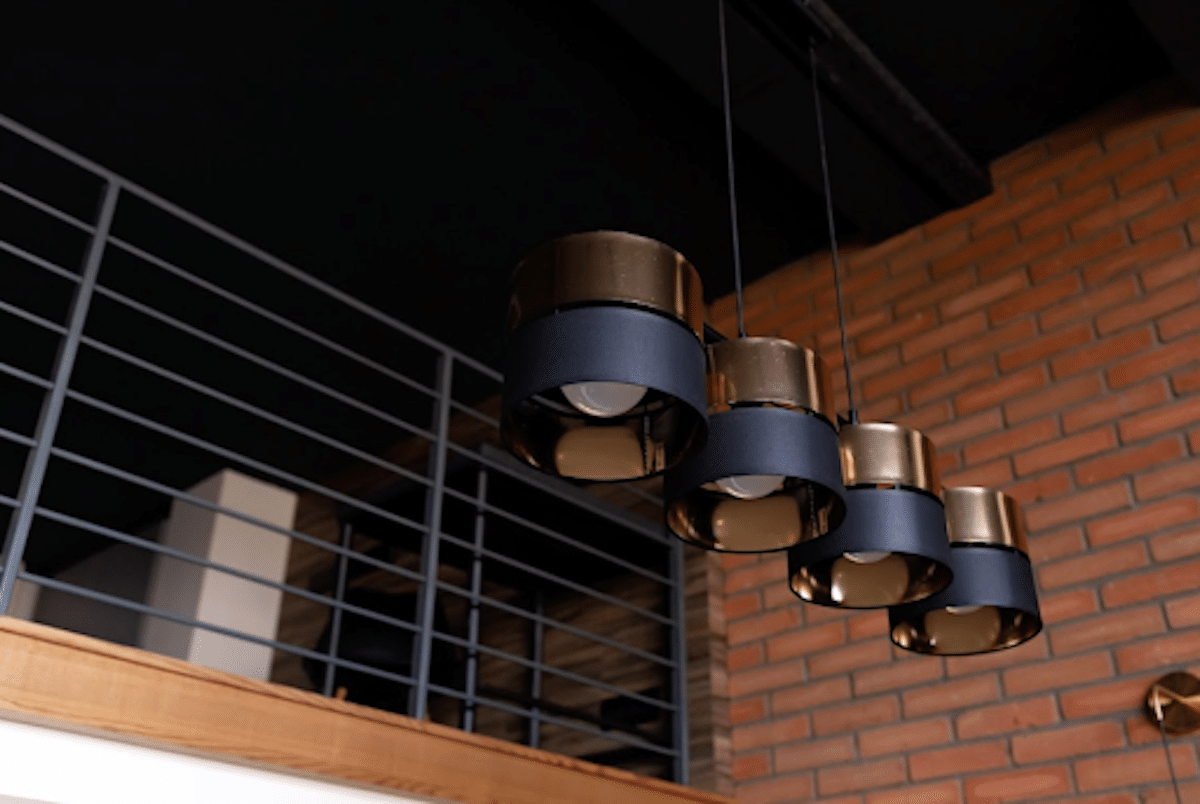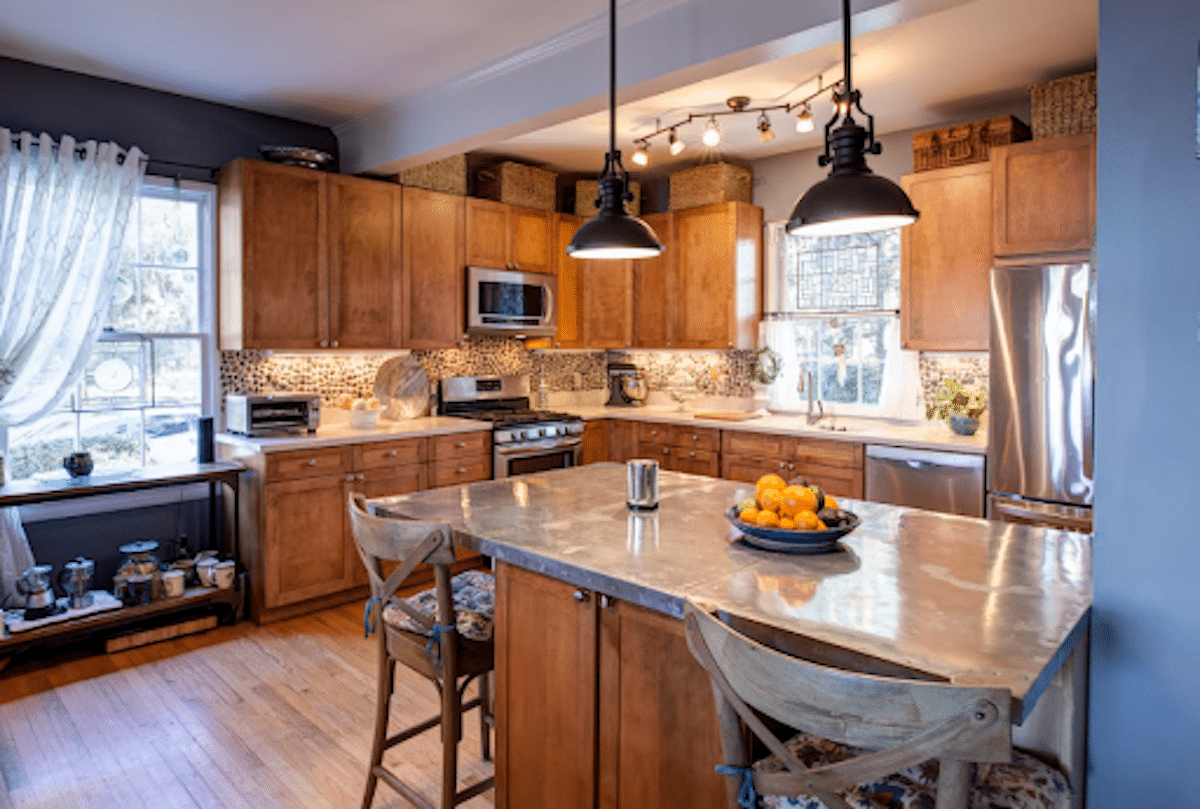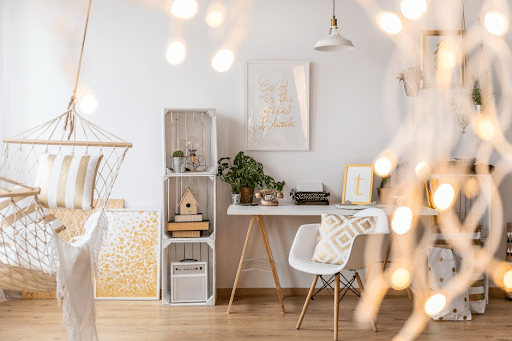Table of Contents
Proper lighting can greatly enhance a home’s atmosphere and style by highlighting important details and creating a desired mood. Without a well-planned lighting scheme, architectural features, artwork, and other focal points may be overlooked or appear flat. Achieving the right balance of fixtures, layers, direction, and flow is crucial for effective lighting design. Experts in the field have shared their insights and knowledge, helping homeowners better understand the art of lighting throughout the year.
Lighting Tips From Interior Designers
Add an Accent Element to Your Lighting
As with any other aspect of interior design, lighting is a crucial factor in decor. There is a wide range of bold and attractive lighting fixtures to choose from. For instance, placing a grand chandelier in the center of a room can add a sense of luxury to your home. You can incorporate modern interior lighting, such as floor lamps and ceiling pendants, to create a dramatic effect.
Keep the Light Balanced
Proper lighting design is about finding the right balance. While many believe a lack of light is problematic, avoiding too much is important. The objective is to create an attractive and functional space without sacrificing efficiency or design. It’s crucial to avoid overworking one or two fixtures or having too many to achieve the perfect balance.
Mix Different Types of Lights
In the world of lighting design, variety is key to transforming a space from ordinary to extraordinary. Mixing different types of light fixtures, including designs and styles of lighting, can make your space both unique and functional. Many lighting experts enjoy finding the perfect combination of fixtures to achieve the desired effect.
Consider Functionality and Ambiance
Designing the lighting in a kitchen can be challenging yet exciting, as it is one of the most important rooms in a home. Since kitchens serve a variety of purposes, it is essential to prioritize functionality and ambiance during the planning and design process.
Look for Layered Lighting
To achieve a cozy and inviting look, it’s important to layer your home’s interior lighting. Many DIY decorators tend to focus on ambient lighting, resulting in areas where light doesn’t reach, which can detract from a room’s overall aesthetic. It’s crucial to incorporate different types of lighting fixtures, such as ambient, task, and accent lighting, to avoid dead corners and create a warm and welcoming atmosphere.
Step Outside
Consider outdoor lighting as well, as it can greatly impact the first impression of your home. Lighting up the landscape, garage, and sidewalks can extend the feeling of comfort from the inside of your home to the outside and make guests feel welcome and secure. Remember, great lighting is not limited to the interior of your home.
Play With Light Intensity
Adjusting the light intensity can greatly improve home interior lighting. Cool white light helps to brighten a room but can make it difficult to fall asleep, which is great for a study but bad in the bedroom. On the other hand, yellow light is perfect to set up a casual mood. A good mix of light intensities can transform the space instantly.
Choose the Number of Lights By the Size of the Room
When determining the number of lights needed for a room, it is important for a lighting design company to consider the size of the room and where the lights will be placed. Avoid placing lights too high on the ceiling and instead focus on lighting the room itself. When installing wall lights, consider whether they point up or down and determine the appropriate height. Typically, wall lights are hung between 5’2″ and 5’8″, but this may vary depending on the height of your ceilings.
Highlight the Texture of the Walls
Accent lighting, in combination with recessed ceiling fixtures, can allow space to go from a brightly lit area to a soft relaxing spa with the flick of a switch. Choose flush mount fixtures, as these are subtle in their appearance and can provide an extremely bright and even quality of light in a space that is the next best thing to natural light.
Use Warm Lighting
The temperature of light is measured in Kelvins, which determines the type of glow emitted by the fixture. Warm light typically ranges between 2,700-3,200 Kelvins, while cool light ranges between 5,000-6,000 Kelvins. Daylight sits in between warm and cool light at 4,000-4,500 Kelvins.
Hang Your Lights the Right Way
The placement of light fixtures can greatly affect a room’s overall design. If a pendant light is hung too low, it can make it difficult to move around, while hanging it too high can make it less noticeable. Finding the right balance and installing lights at the correct height is important to create an impactful look.
Don’t Look on Aesthetics Only
Lighting should not be chosen solely based on aesthetics, as it also serves an important functional purpose. While it is important to consider the aesthetics of the lighting fixtures, it is equally important to consider the practical purposes of the lighting in each room. Each room has unique lighting needs based on its intended use. For instance, a kitchen requires bright and focused lighting to facilitate cooking and cleaning, while a bedroom may require softer, more muted lighting to create a relaxing atmosphere. In addition to the type of light fixture, it is also important to consider the energy consumption, wattage, and light intensity of each bulb selected, in order to ensure that the lighting is both functional and efficient. By taking these factors into consideration during the planning stage, one can design a lighting scheme that is both aesthetically pleasing and practical for the intended use of each room in the home.
Don’t Blindly Follow Trends
When it comes to selecting the right lighting fixtures for your home, it’s important to keep in mind the overall interior design style you’ve chosen. This will help ensure that the fixtures provide the necessary light and contribute to your home’s overall aesthetic. With so many different types of fixtures available, it can be easy to get carried away with selecting the most trendy or eye-catching ones. However, it’s important to remember that the functionality of the fixture is just as important as its appearance.
By taking the time to consider all of these factors carefully, you can be sure that the lighting fixtures you choose will not only provide the necessary light but will also complement the overall look and feel of your home.
Consider Transparent Fixtures in Small Spaces
According to New York-based interior designer Ahmad AbouZanat, transparent fixtures like glass globes or wired drums are great for small kitchen lighting ideas. For a sleek look, linear and pared-back designs work well if the light has an interesting backdrop. Heavier or larger fixtures can be used if there’s an opportunity to see them from a different perspective without obstructing the view of or from the space.
Conclusion
In summary, lighting design is a crucial aspect of interior design that should not be overlooked. With the help of expert tips and insights, homeowners can achieve a well-balanced and functional lighting scheme that enhances the overall atmosphere and style of their homes. By considering factors such as the size and purpose of each room, the type and intensity of lighting, and the balance of fixtures, layers, and flow, anyone can create a beautiful and inviting space with perfect lighting.
Feature Image: Source




